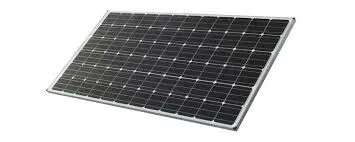Average Size of Solar Panel Systems
Average Size of Solar Panel Systems
The sun has long been regarded as a boundless source of energy, and the advent of solar technology has made harnessing this energy more feasible than ever. One of the key considerations for anyone looking to invest in solar energy is the size of the solar panel system required. Understanding the average size of solar panel systems can significantly impact the feasibility, efficiency, and cost-effectiveness of harnessing solar power.
A typical residential solar panel system ranges from 5 to 10 kilowatts (kW), which generally includes between 15 to 40 solar panels. Each panel typically produces about 250 to 400 watts of electricity. Thus, for a household that consumes around 800 to 1,200 kilowatt-hours (kWh) per month, a solar panel system of this size should suffice. However, it is crucial to consider various factors that can influence the number and size of panels required.
First, the total energy consumption of a household plays a vital role. Families that consume more electricity will need a larger solar panel system to meet their energy needs. Additionally, the system size will differ based on geographical location and climate. Homes located in sunny regions will typically need fewer panels than those in cloudy or less sunny areas because they can generate more power year-round.
Another important factor is the orientation and shading of the roof. A south-facing roof with no obstructions will generate the most energy. However, if the roof is shaded by trees or buildings or has an unusual angle, this will reduce the efficiency of the solar panels, requiring a larger system to compensate for the lost production.
average size of solar panel system

Cost is another significant consideration when determining the size of a solar system. On average, the cost of installing a solar panel system can range from $15,000 to $30,000 before tax credits and incentives. Larger systems, while providing more energy, also come with higher upfront costs. Therefore, homeowners must evaluate both their budget and energy needs carefully.
Moreover, combining solar systems with energy storage solutions, like batteries, can provide a more comprehensive energy strategy. In regions where electricity prices are high or where there are frequent outages, having a battery storage system can be advantageous. This could increase the total size of the solar panel system needed since sufficient power must be generated to charge the batteries as well as supply the household.
It is also worth noting that commercial solar panel systems vary significantly in size, often ranging from 10 kW to several megawatts (MW). These systems are designed to meet the larger energy demands of businesses and can include hundreds or even thousands of solar panels.
In conclusion, the average size of solar panel systems varies depending on multiple factors, including energy consumption, geographical location, roof characteristics, and budget. Homeowners and businesses alike should consult with reputable solar energy providers to assess their needs and design an effective solar solution tailored to their specific situation. By doing so, they can take a significant step towards sustainable energy use, reduced electricity bills, and a smaller carbon footprint.
-
Unlocking Energy Freedom with the Off Grid Solar InverterNewsJun.06,2025
-
Unlock More Solar Power with a High-Efficiency Bifacial Solar PanelNewsJun.06,2025
-
Power Your Future with High-Efficiency Monocrystalline Solar PanelsNewsJun.06,2025
-
Next-Gen Solar Power Starts with Micro Solar InvertersNewsJun.06,2025
-
Harnessing Peak Efficiency with the On Grid Solar InverterNewsJun.06,2025
-
Discover Unmatched Efficiency with the Latest String Solar InverterNewsJun.06,2025







